One Day Builds
Adam embarks on one of his most ambitious builds yet: fulfil…
Show And Tell
Adam recently completed a build of the royal St. Edwards cro…
Making
Viewers often ask to see Adam working in real-time, so this …
One Day Builds
Adam and Norm assemble a beautifully machined replica prop k…
One Day Builds
One of the ways Adam has been getting through lockdown has b…
Making
Adam unboxes and performs a quick test of this novel new hel…
Making
When Adam visited Weta Workshop early last year, he stopped …
One Day Builds
Adam tackles a shop shelf build that he's been putting off f…
Show And Tell
Time for a model kit build! This steampunk-inspired mechanic…
One Day Builds
Adam reveals his surprise Christmas present for his wife--a …










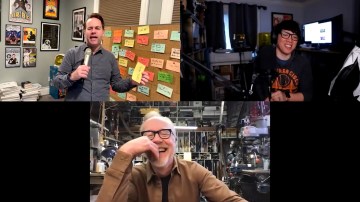


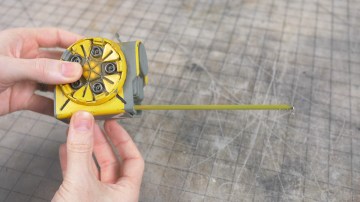



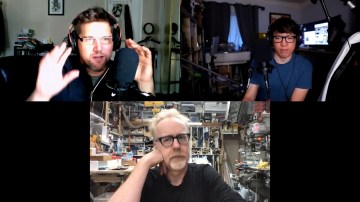








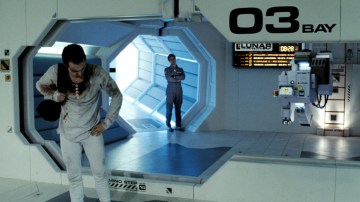





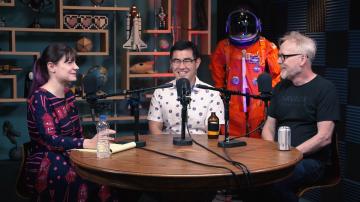




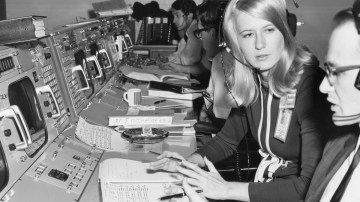
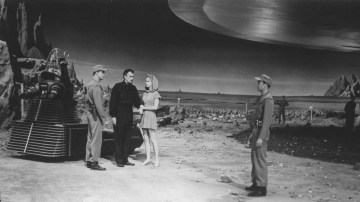
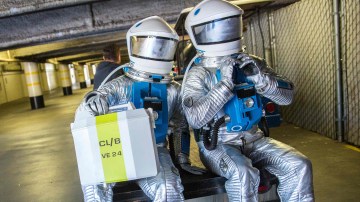




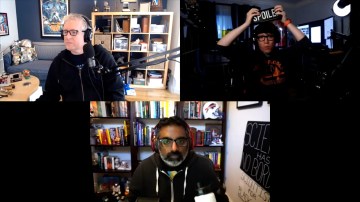


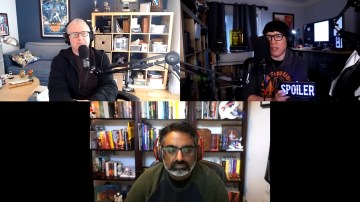



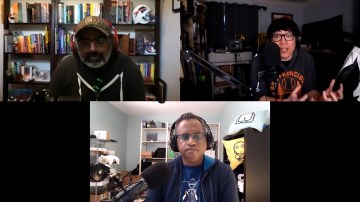



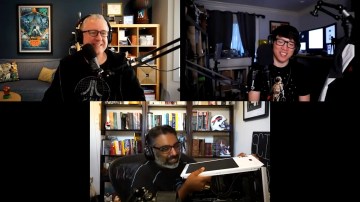




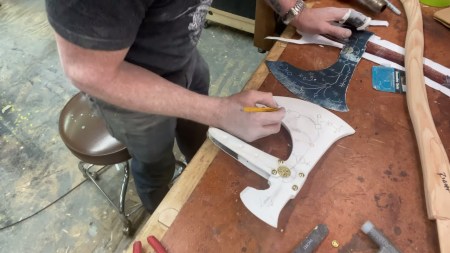







Adam should be on an episode of A Bunch Of Dads
It’s a bit different here in the Netherlands, we don’t have a learners licence. So if you want to learn you have to go to one of the many many driving schools.
Though the amount of bikes, pedestrians, assorted animals and dikes… Dikes, that’s an experiance for the first time driver. A road that’s barely bigger than your car with a 9ft drop on either side and your instructor telling you to put your foot down and drive 50mph, thats about when you see lifestock (and you have to totally dismantle your car for the lifestock to pass, love that law lol)
In Norway, you cannot drive on your own until you have a license at 18.
When you turn 16, you take a theoretical course and an exam, after which you can drive, but only if accompanied by someone who is above the age of 25 and has had a license for 5 consecutive years without suspension or loss.
In addition to a theoretical course and the written test, you have to take certain mandatory skill-tests at a certified driving-school, including distance/highway driving (IIRC about 4+ hours), driving in the dark, driving in a city center, safe passing of other vehicles etc. and everyone’s favorite the slippery road-surface test.
Basically, since Norway sees a lot of difficult road-conditions, they give you some instruction on driving on slippery and icy roads. This happens on a large steel-covered runway that they spray down with a mixture containing oil, giving you almost no traction. You drive around a course multiple times and at the end of each lap you’ll arrive at the runway where you do your best to stay straight, the instructor will then randomly pull the handbrake and force a skid… at which point he or she will press a remote which makes large foam moose-figures come shooting out into the road and you try to avoid hitting them. The instructor will demonstrate the necessary skills beforehand, you switch places and you try repeating them.
It’s a lot of fun, and has saved my ass and car on many a icy/slushy drive since.
In addition to driving with your parents or other qualified people, most people will also take a number of non-formalized lessons at the same driving school that they chose for those skill-tests. It gets pretty expensive, but means you should be relatively well prepared once you hit the road.
For the final test the driving school usually provides the car, you do a 45 minute drive with your instructor then go straight to pick up the person giving you the test. On my way to take the test on the mainland, I drove off the ferry with my instructor and stopped in the first intersection. The person behind me wasn’t paying attention and crashed into me, breaking both bumpers. It made for a fun anecdote for the test-giver, but did make my pulse rise a bit. I passed, in spite of driving in an unfamiliar location following a 3 foot snowfall the night before and having an accident on my way to the test.
Thing2 should try evo magazine. Gorgeous photography a very feeling based view of writing.
Youtubers Harry Metcalfe and Chris Harris are both former writers.
though cool to read about learning customs my mind got hooked on moose avoidance and a moose canon.
I taught me wife to drive.
I do not recommend it.
So, ironically, I just stumbled across the best “how to drive” video I’ve ever seen. Jackie Stewart (the triple f1 champion) made an hour long instructional video in the 80’s that really focused on the physics behind driving as well as the importance of treating your machinery well. It’s complete with corny music and all, but, unlike the videos we had to watch in driver’s ed, everything he says could actually help most drivers massively. I’d highly recommend it. It’s stuff that unless you have been on a track with instruction, you probably don’t know, as an engineer, I found it intriguing, haha.
Behind the Wheel with Jackie Stewart: https://youtu.be/IZw7ZnxWKjs
1st driving test: Total confidence, failed 20 meters before final stop.
2nd driving test: Nervous wreck, Took two of my fathers anti-anxiety pills which I had never taken before. Couldn’t get the car started without drowning the engine. Failed 20 meters after seting off.
3rd driving test: Instructor moved the test to somewhere in the countryside with no other drivers in sight. Passed with flying colours, if by flying colours you mean parts of livestock protruding from ventilator grille.
Passed the test in 1986. Only minor bruises and slight damage of property not my own.
Although most Americans seem to be talking about pure electric cars (like Tesla) replacing gas powered cars, I think hydrogen powered or gas/electric cars are the real answer.
The reason most big Asian car makers push hydrogen cars (which require gassing up at a station) and not pure electric is because of the car culture. Most Americans with enough money to buy a pure electric car usually has a house/condo with enclosed garage, which means they can install own charger or safely leave the car plugged in overnight. They have a safe place to leave their electric car plugged in overnight. In most of Asia/Europe/etc, such enclosed garage is a rarity.
Thus the push for Hydrogen powered cars by companies like Toyota/Hyundai. I haven’t seen any auto analyst/writer bring this up when they talk about electric/hydrogen car debate.
Passed my test in the Uk in 1998 before there was any sort of initial theory test. You turned 17, applied for a provisional license, (got added to your parent’s insurance) and away you go, as long as there was someone sitting next to you who held a full license (and had done so for at least 3 years). Eventually you organised to sit a test (no requirement to have any professional lessons) where the examiner would take you out on various local roads at various speed limits, and get you to do various manoeuvres like reverse round a corner, parallel park and turn in the road (3 point turn – don’t touch the kerbs or you fail!) and an emergency stop. The examiner would then ask you various questions about stopping distances and what various signs and road markings meant. If you passed you could immediately (if you arranged the insurance as a full driver) get behind a wheel on your own, and drive from one end of the country to the other, in all sorts of weather, day or night and on the motorways, which you are explicitly not allowed to drive on as a learner.
These days you have to pass a computer based test before you start practical learning, but still no learning requirement for motorways or tricky conditions.
I have had a few sessions at Silverstone learning to handle cars in oversteer, understeer, what the ABS does and how not to need it, etc.
Great advice I’ve had:
– Always be aware of your 4 exits – forward, backward and to either side and keep as many of those options open as possible.
– Learn how you drive your car – if you have a safe opportunity (e.g. in a big empty car park / airfield ) push your car beyond its and your limits, preferably with some snow & ice to reduce the speeds involved. If you figure out how to deal with a situation when you’re expecting it, you already know what to do when you aren’t expecting it.
I have two tips. One, make the student watch Russian dashcam compilations to make them less complacent. Every time something unbelievably random happens, ask, “Were you looking at your phone? You just lost your car!”.
Second, UK police driver trainees do an exercise called narrated driving, where they drive an instructor through town and have to verbally identify every single threat or potential issue they see – they have to call out every old lady who might step off the pavement, predict the next move of every car, everything. I’ve tried it and it’s *very* intense.
Some times of the year where I live now, I’ll encounter deer (often up to a dozen of them) on the road more often than not when driving anywhere. Very much a real-life scenario, and it looks hilarious 🙂
Photo of foam-moose on this type of course:
I’m in my late 20s and I don’t want to drive or own a car. I own a 2001 Subaru Outback that’s nearing a quarter-million miles on it. My wife used to have to drive it for work. We’re doing everything we can to make it the last car we ever own. If we can stretch its life to the time when there are socialized self-driving car networks, then we won’t buy another car when it finally dies.
The only exception to that would be if we become very wealthy, then I’d like to have some fun cars. But cars as toys is a totally different subject than ‘what is the most practical way for me and my family to get around.’
Also, I never failed any portion of my written or driving tests. I got things wrong. I didn’t drink at 16, don’t drink now, and never will, so the alcohol questions are tough because I never studied them. I just thought, “this doesn’t apply to me and never will.”
That is a fantastic idea.
when i learned to drive my parents owned 3 cars (89 eagle summit (which i bought from them when i got my license), 89 Chrysler lebaron turbo, and a Mazda pickup) all standard (manual shift). when i took my road test (in 1998)i used the eagle. i passed first try but… (ny state test btw)
where you go to take the test its scheduled but other people are scheduled the same day and you line along the road by the burger king parking lot. the instructor got into the car in front of mine (which was owned by a driving school) then after about a minute he got out and a girl got out of the drivers seat crying and the instructor walked away and to my car. (this is where panic sets in.) my dad got out of my car the instructor got in, checked my info and away we went. right to a red light on a hill (facing uphill). i rode the clutch slightly but didn’t roll back or stall and we turned to a side street. he said “turn here.” and i said “what?” and missed the turn. he told me to take the the next turn so i did. (still panicking) we tried a few times to parallel park in a spot he picked, but he kept yelling at me to stop because of a fire hydrant. i informed him that i was not actually parking (just showing that i could) nor was i going to hit it. either way we didn’t park there. i did parallel park first try behind a car later after i relaxed a bit. then we came to a stop sign to a 4 lane road and i was to turn right and take the first left (about 20 yards away). i pulled out a bit faster than i probably should switched the the blinker from right to left shifted to second and basically slid the car sideways across 2 lanes in one move, and preceded to turn left with the flow of traffic. the instructor said “you did that very well.” i was absolutely amazed and completely at ease the rest of the test, to the point that at the end i palmed the wheel pulling into the parking space in burger king.
thanx for reading
*raises hand* I also learned on a tractor. Hand throttle, un-synchronized transmission, and everything. Pretty stressful, but totally awesome.
I haven’t driven in 15 or 16 years. I loved to drive, one of my favorite things to do was just go out at 2-3 AM and just cruse the empty streets.
I was not a good driver though. I got into a half a dozen accidents that were all my fault. The last one I was in I ran a stoplight because I wasn’t paying attention and hit a young woman driving the other way. I decided then that before I killed myself or worse, some one else, I should stop driving and on the way home stopped at the licensing office and gave up my license. I miss it some times, but I don’t regret it.
I ride an E-Bike now, a scooter style one that does 20 MPH max and usually only to and from the graveyard shift at work when the roads are mostly dead.
As someone who just turned 20, its very interesting listening to you guys talk about when you learned to drive. I can relate because ive been driving a couple years now so I understand what you are talking about, however learning to drive is still relatively fresh in my mind so I can understand both sides. Also as a side note, on the topic of automatic and manual my step dad is from Australia and has lived here for about 20 years. When i was learning to drive he found it interesting to learn about how the process works in the US. He informed me that in Australia there are two different licenses, one for automatic drivers which is considered a restricted license, and a manual license which allows you to drive both type of cars. So where Adam switched cars to take his test the second time, in other places that would have been a different test and license all together. I think while being a bit of a hassle, especially if you don’t know someone who has a manual that you can borrow, its a really good idea. I do know few people who have their licences and own manuals and really should have been required to be tested before driving the manual. Just an interesting bit of driving info from other places, love the shows.
Hvor er du fra?
Herøy på Sunnmøre. 🙂
Also a member of the tractor club but I graduated to a WW2 Ford ‘Jeep’. After learning how to do three point turns on a grass hill it makes road driving seem a lot easier or at least you are able to focus on the more dangerous aspect of those around you. Strangely though in the UK you are able to get a pilot’s licence before a drivers so on my 17th birthday I got a full private pilot’s licence and a provisional drivers licence!
In terms of advise I recently taught my girlfriend how to drive in London and had forgotten just how much of learning to drive is the physical aspect of controlling the car before you are able to concentrate on traffic. If you have a chance to do some non-road driving e.g. tracks, offroad, skid pan then it will definitely help you be a better driver.
Also a member of the tractor club but I graduated to a WW2 Ford ‘Jeep’. After learning how to do three point turns on a grass hill it makes road driving seem a lot easier or at least you are able to focus on the more dangerous aspect of those around you. Strangely though in the UK you are able to get a pilot’s licence before a drivers so on my 17th birthday I got a full private pilot’s licence and a provisional drivers licence!
In terms of advise I recently taught my girlfriend how to drive in London and had forgotten just how much of learning to drive is the physical aspect of controlling the car before you are able to concentrate on traffic. If you have a chance to do some non-road driving e.g. tracks, offroad, skid pan then it will definitely help you be a better driver.
Also a member of the tractor club but I graduated to a WW2 Ford ‘Jeep’. After learning how to do three point turns on a grass hill it makes road driving seem a lot easier or at least you are able to focus on the more dangerous aspect of those around you. Strangely though in the UK you are able to get a pilot’s licence before a drivers so on my 17th birthday I got a full private pilot’s licence and a provisional drivers licence!
In terms of advise I recently taught my girlfriend how to drive in London and had forgotten just how much of learning to drive is the physical aspect of controlling the car before you are able to concentrate on traffic. If you have a chance to do some non-road driving e.g. tracks, offroad, skid pan then it will definitely help you be a better driver.
I don’t have any good Learning To Drive or even Driving stories….
I just wanted to say “Brought to you by Premium Members” is the best preshow ad ever
,-)
You don’t have to look every three seconds in order to figure all of this out, because without thinking. In iaido(and other Japanese martial arts), we have a term for this, mushin, which means “no mind.” We have another term, zanshin, which describes the ability to stay alert while in a state of being relaxed.
As somebody who also juggles, it’s there too. Even when you’re shooting a gun you have this relaxed focus that tells you how to pull the trigger, when to release it, where you’re breathing, and anyone whose focused on their marksmanship can tell you how much of an effect breathing at the wrong time can have on your grouping. If you watch a professional driver, they breath differently. You get this kind of thing from picking something apart rigorously, and experiencing every extreme of learning. For martial artists, that often means bringing our bodies to their breaking point, and keeping them there. For professional drivers, you look at the car as an extension of your own body, and then you do the same exact thing.
I think we need to take driving from being a skill to being an avenue of self improvement. It’s important that we teach kids how to relax, how to empty their minds, how to breath. With all of the constant stimuli that we have, driving can be incredibly taxing to young adults. Put the phone down, focus on moving foward; driving is an art, and a science. It’s messy, it’s difficult, and we all need to be better at it.
Part of my issue with kids learning to drive is that there’s no room for playing. Learning anything should be messy. You should make mistakes. Sometimes those mistakes are expensive, but that’st he price of learning. I want kids to be given lessons and brought to the level of a quasi-professional driver, that way, when something super weird happens(which it inevitably will), they won’t freeze up.
I have been racing cars for about 20 years and the best advice I can give is look ahead at least 2 cars and keep aware of what is going on around you.
Adam’s adage of “be predictable” is also spot on. (We tell that to our new racers going out in their first race, ” Hold you line, be predictable”)
I would also say “The Things” should get training in how the car feels when it’s going into a skid or sliding, like on ice or wet pavement. I’m not sure if the driving school at Sears Point has SkidCars. Prodrive at Portland International Raceway has them.
www.skidcar.com/
It sucks here in Northern Ireland, i don’t know about everywhere else but when your learning and when you pass the test you are restricted to 45 mph (72 KPH) and must have a red R displayed on the car for a year after the test, you not allowed to be on motorways when learning but you can when restricted, so imaging driving on a 70-80 MPH multi-lane road at 45 MPH, plus everyone seems to treat learners or restricted as crap, driving out in front of them, flashing lights cause your holding someone up, flipping the bird, driving so close behind you you can nearly smell their breath (all from personal experience) and there’s not much you can do about it.
A lot of good advice, I drive an ambulance, and more times than not my partner is unrestrained in the back with the patient, being predictable, passenger comfort, and my situational awareness is a constant. I find driving can be more tiring than patient care, after a shift. 10,000 hrs to be proficient at anything!!
I learned to drive in an ’84 Chevy Blazer, automatic, and my first car was an 80 El Camino, also an automatic. I _can_ drive a stick shift but only on a tractor (and I understand Adam’s comment of you being able to mail a letter to the clutch before it reacts). My first job included delivery of meals all across south Houston (including some very sketchy places). Thankfully my first real accident didn’t happen until I was in my mid-twenties (but it sucked because I knew the woman).
I learned to drive stick on a motorcycle – not that the motorcycle had a stick, but it was, of course, a manual that required shifting. After learning to deal with a clutch on a motorcycle, it was very easy to figure out a standard in a car.
Oh, and the one time when I think a motorcycle is a bit more appropriate is: small college town – relatively light traffic, and it’s generally MUCH easier to park a motorcycle on campus.
The one thing I was taught in drivers ed. that, in my opinion, is the best piece of advice. When driving always act like people are going to screw up.
Another good resource is the Tirerack Street survival course. It pairs kids with certified BMW Club of North America instructors teaching car control,situational awareness and generally how cars work.
The one piece of advice I always got was “trust their tires, not their turn signal.”
I had definitely heard that advice about always having an out but it wasn’t something that I was as cognizant of until I got my pilot’s license. Knowing where you would land at all times if you had an engine failure is something my instructor drilled into me for that and I think it carried over into driving as a result. It’s actually more important for driving though, since you only have a few seconds to respond to something unlike a plane where you might have a few minutes if you have an engine failure.
I don’t really recall having issues with the written exam, but I remember a problem my sister had.
There was a question that had something to do with you not being able to have an opened bottle of alcohol in the car unless it’s in the trunk. She said false or whatever on this question because she was under 21. I think this question is a case of what Norm said. Technically its legal, but if you think its illegal then there is no harm in that even though its technically the wrong answer.
Lucky! I have flown a Sonex (Experimental) a handful of times with my good friends that built the plane and the process reminded me what it was like learning to drive stick long ago. Even the most simple actions would make me break out into a sweat and I found myself always trying to “stay ahead of the power curve” as test pilots would say.
Same thing happened when I learned how to ride a motorcycle but now there’s just nothing like it. When you understand the machine, it is like an extension of your body. When you no longer have to focus so closely on what the bike is telling you, you can focus more on what the road (and others around you) are telling you. I would be interested in hearing what has to say about learning to ride, since he’s a fellow rider. I would also LOVE to hear what motorcycles Adam used to ride.
I’m 17 and just got my license, and I can very much relate to this. I’ve heard a lot of my peers talking about how relieved they are that they won’t have to drive in twenty years, and it bothers me a little. Oh well.
Also, I live in Westchester, and drive Route 9 all the time. It’s true, most parts of that road are terribly maintained, and the county isn’t very fond of it.
As a licensed driving school teacher in Washington state, I would recommend bringing them to an autocross event if they already have a good idea of how to drive. If they don’t the best thing to do is try and support them via supporting them as they learn. I would also say that sending them to a driving school is an amazing idea. I will be the first to point out I am a little bit biased on the subject. However, I have been doing autocross for about 12 years and have been a SCCA flagger and control licensed person for 4 currently. I feel that the experience I have gotten in that time is absolutely why I am the driver I am. I have seen the worse and best of driving. Feel free to send me any questions you may have for a driving instructor or someone that does semi-pro racing.
I technically failed the written portion by a couple questions. The lady still passed me for whatever reason. And 13 years later, collision-free!
You know what disqualifies you from driving? No depth perception, one eye legally blind (which is of course why the no depth perception), and missing the outer (temporal) peripheral vision in both eyes. I wouldn’t feel safe driving anyway. I’ve practiced a tiny bit in an automatic in a parking lot, so I could probably roll down an empty road in an absolute crisis, but I really can’t drive.
I am really looking forward to self-driving cars, I want better options than bussing & walking (slow, tiring), rides from others (unreliable), and taxis (expensive — and as a gal who would be traveling alone, Uber and Lyft kinda scare me so I only do traditional cabs).
Great discussion guys, as usual. I’ve got to speak up in defense of motorcycles and scooters, though.
Motorcycles always get a bad safety wrap, but the actual statistics don’t line up with the common american perception of how “dangerous” they are. Way more people get hurt and killed each year doing far more common things like falling off of ladders (or in the shower) or crossing the street, or from preventable disease. Also, just like how new car drivers are much more likely to get into accidents, most motorcycle accidents come from inexperience. In fact, more than half happen within the first 5 months of riding. Couple that with alcohol use and helmet neglect, and the remaining fatalities are a very small number. Meanwhile the overwhelming majority of responsible, experienced, sober, helmet-wearing motorcyclists go decades without accidents of any kind. Here’s actual numbers from the CDC for 2002:
As for the safety perception of motorcycles, there’s also the idiot factor to take into consideration here. Just like drunks give drinking a bad name, the very visible jackassery undertaking by a lot of motorcyclists give us all a bad name. More often than not, it’s those guys who find themselves in the ER.
People also often cite the “he was doing everything right and still got hurt” mantra, on which I call bullshit. Yes, it’s true, but it’s true for everything. You can be driving your car right and still get killed by a drunk motorist or sleep-deprived trucker. You can have the right of way crossing the street on foot and still get hit by a bus. The whole world is dangerous, not just motorcycles.
Elsewhere in the world, where motorcycles and scooters are more common parts of the transportation landscape, this matriarchal worrying just isn’t part of the culture like it is here. I think that because motorcycles here are seen as recreational and optional, their use feels more elective and by extension, less legitimate. To each their own, but I know plenty of people in my circles who’ve had bike accidents and keep right on riding. I’ve also lost family members in automobile accidents — something we all do all the time without even thinking about how dangerous it is. I say everything is dangerous, so plan accordingly and try to have fun.
For anyone who’s interested, a few years ago I wrote a whole post about the relative danger of motorcycles here.
That is quite fascinating to think about…. tens of millions of Americans live in apartments. And I’d wager most of them are not in a walking city, they need a car to survive.
http://www.nmhc.org/Content.aspx?id=4708
and I’d imagine others are like Jeremy mentioned on a recent podcast?, they have to park in the street even if they have a non-apartment (condo, house, whatever).
I can’t actually imagine any type of public electric charging station that would work in the average American apartment complex without being catastrophically vandalized. My apartment complex cannot even keep the washing machine room or soda machine from being periodically trashed. How do you keep people from stealing the charging cables? Or sticking a pair of scissors into the outlet? How do you keep someone from accidentally electrocuting themselves using junky old cables that are rotting and damaged? How do you deal with kids playing around it? How do you get insurance to cover it?
I had a scooter for 2 years, and it was amazing and less expensive than transit! Then I got a motorcycle and got in a serious accident.. Let me just say that 2 months ago I discovered Tested.com and I have seen nearly every video haha, thats how many hours I spend in bed!
I loved every minute of riding my Yamaha, but I wouldn’t put my family and gf through that again! And omg my leg hurts so bad! Hah!
Best advice my dad gave me:
Be predictable and assume nobody else will be
Second best piece of advice:
When making a protected left, don’t turn your wheel until you actually start to make the turn. If you crank the wheel over while you wait for a gap, getting rear ended could push you right into oncoming traffic.
I moved to Houston to attend graduate school – Rice University had a great Graduate Student Handbook (as well as a great tee-shirt, “Graduate Students, they never learn”). There was a section on driving in Texas with a description of road rage (a common problem there). The Graduate Student Handbook advised us to avoid road rage because “Texas has a concealed weapons law”.
Also, driving a Miata in the great state of Texas is the best way to learn to drive defensively.
Guys, Adam –
there are Car Control classes specifcally for new teen drivers, highly recommened. They teach skid recovery, obstacle avoidance, ABS braking, etc. Definetly worthwhile, takes 1 day, parents come along, costs around a hundred bucks. Think of these as the ‘practical’ half of Driver’s Ed.
Tirre Rack sponsors the “Teen Survival Driving” couses twice per year in CA. The Northern California BMW clud offers their own version, open to anyone, twice a year.
Similar for me. I got two questions wrong on the written test out of twenty, both were about demerit points based on impaired driving. I didn’t drink then, I don’t now, and I likely never will, so I wasn’t really bothered by getting those questions wrong either.
In Ontario you have to do three tests to get your full license. Written test gets you your learners permit, first driving test gets you your G1 which has a couple of restrictions on it, mainly not being able to drive on the highway alone, and the G test which is your highway test. I managed to make zero infractions on both of the practical tests, but I took the lessons I learned in defensive driving school very seriously and drive very responsibly. The G1 test actually had me incredibly stressed, since I absolutely needed to pass in order to be able to drive myself to college two weeks later; it’s the only time in my life where I was physically shaking from nerves/pressure.
If there was one thing I’d recommend to parents of new drivers it would absolutely be to pay for a good, reputable, defensive driving school course and to not cheap out on it (assuming you can afford to, of course). If you’re taught properly and take the responsibility of driving seriously, you can really better your chances of keeping collision free, even when the collision technically wouldn’t be your fault (e.g. learning tricks on how to avoid and escape being rear-ended).
The one downside of course is that if you’re a really good/responsible driver, people tend to like having you drive them places.
There are some cities where owning a vehicle is ridiculous– Manhattan Island comes to mind! Only reason to own a car there is so you can drive away! Mass transit rules! Atlanta’s not too bad if you’re near the bus or train routes.
“I want to die peacefully in my sleep, like my grandmother did. Not screaming at the top of my lungs like her passengers!”
I started driving by backing mom’s car out of the garage. This expanded into backing out and turning the car around (still in the driveway). Then Johnny Goles’ driver ed class and behind-the-wheel training. I passed my driver’s test 1st time– both the book portion and the behind-the-wheel. Most important part of the book portion was looking into a box and having to tell the tester what color light did I see (red-yellow-green). The behind-the-wheel consisted of driving about 1/2 mile down the road, turn left, do a “K” turn (3-point) on a road with no curbs. I could have done a “U” turn!
IIRC my first manual xmission was my dad’s Studebaker pickup with 3-on-the-column. I had shifting for myself pretty much under control, and then my sister wanted to try. We were on a back road, and she was doing OK until we came to the stop at the top of a hill. And, of course, someone came right up behind us. We ended up doing a Member-of-a-large-ethnic-group Fire Drill– she got out and walked to the passenger side while I slid behind the wheel.
Dad’s rule about manual shifts– don’t shift in the middle of an intersection– make sure you have enough momentum to coast through if you should stall out.
–Paul E Musselman
I find driving to much more draining than being in the back with the patient too. Do people seem to not be predictable at all when they are driving around an ambulance in your city/town? I’ve never had a patient go into the hospital happier than a veteran who laughed his way to the hospital after my partner had to slam on the brakes when he got cut off. Told me none of his planes flew as well as I did…
Well I’ve had the 1 accident, age 16-17 less than a year experience. Had been driving our 3 on the tree Ford pickup for a few week exclusively, steering was really loose (can you see where this is going). Well dad needed it for something that day so I got the Honda Civic with rack and pinion steering, twitch and it moved. Going down a new road, had driven it before but not in the Honda, sweeping-S downhill into uphill going from 4 lanes to 2 lanes on the curve. Drifted a bit so I moved the wheel like I would for the truck, rolled it. First thought in my head when I stopped was “Dad’s gonna be pissed”! He was. Since then my cars have been in multiple wrecks, all while parked and me not in them. Learned my lesson.
Adam I’m not familiar with Fiats so if it applies I will leave you with Click and Clack’s advise for cars for newbie drivers make it a modern car with airbags, anti-lock brakes, and crumple zones, they are safer and will help protect the driver if/when bad things happen.
ETA: Was also a truly just ambulance driver and then a paramedic, you drive as smooth and safe as possible because you can hurt your partner and patient if not careful, always complimented smooth ride and give the same when you get one.
In Utah you can take drivers ed as part of your high school curriculum. I had two quarters of that. It includes classroom, simulator, and road experience with a teacher. One of the best lessons I learned was on the road. We were on a side street with houses and the car in front of me pulled over to the curb. My teacher said to give them plenty of room, because some people don’t check their mirror before opening the door. I moved over, and sure enough the door flew open just as I reached the car. I would have taken the guy’s door off if my teacher hadn’t told me to move over. I also make sure to check my mirror before climbing out on the street side. Two lessons in one.
The car Adam has is a modern Fiat 500 Abarth, with all the current safety devices.
Some of the best advice I ever got was “if you are driving in the NOW its time to stop, you need to be driving 10 seconds from now” My Dad is a pilot, among many other things and one of the things he told me is that you can focus on lots of things if you have time to switch between them, but as you are becoming more reactive than proactive, you will start to miss things. As often happens with planes flying by instruments, where the pilot starts flying the needles rather than the plane, you start just reacting to the traffic around you and instead of being ready, something “comes out of nowhere” I don’t know how many accidents I’ve avoided by just heading for the nearest parking lot and getting my focus back. A couple times I just got a burger and waited for traffic to clear up a bit. late is better than Late.
Fun driving stories though, I’ve done a lot of snow and ice driving in a heap of different vehicles. I’ve had some really white knuckle moments but the best was just after a major winter storm, middle of the day, almost no cars on the road (record breaking fender-bender rates, anyone with a car left was trying to stay home) three lanes a side split highway in a 1996 pontiac sunfire (manual 1.8L for those keeping score at home) I was doing about 60 kmh with no cars in front, and the nearest about 1-1.5km back. the the wheel just goes slack. the weight of my hand on it is enough to turn it, and the car in a ballistic path straight down the highway starts to rotate around center. Clutch in, tried to steer for traction, got just enough to get the car to come back, but it went right around the other way. I remembering checking for the traffic behind me as I was looking at them, figuring they had time to slow down. I got traction back once it made the full 360, about a second before slamming into a snow-drift between the highway and an exit ramp (thankfully the only one in the city that has a long shallow exit and not a fast sweeper and a bridge abutment.) That car was a beast. No ABS, about as much horsepower as a large lawn mower, and the momentum of a freight train. And the best part was the emergency break handle was this massive thing like the eject handle on a mech or something, it felt like pulling it should cause the earth to stop!
been there, done that. I can relate!
I’ve always been interested in the term “standard transmission”, at some point it was, but at this point isn’t automatic more “standard” than manual? I only learned to drive a stick 10 years after I had been driving when I thought it would be cool to get an old Fiero.
Hyggelig å møte en likesinnet sjel! Jeg er fra Oppegård i Akershus 🙂
I learnt driving old land rovers around farms here in wales. Most farmers kids new how to drive by the time they are 10…However.. when it came to taking my test it was back in 1993..same as all UK users here it is a 40 min test followed by a few questions…In my opinion you don’t learn until you pass your test and are driving in situations that can never be practiced….The only bit of advice you need to tell anyone who is learning to drive is…treat every body else on the road as if they were idiots who cant drive.
Driver-less cars are pointless, we have had them for years they are called TAXIS and Buses. I can see them sort of working in cities but what about in the countryside. We have more single track roads than two lanes (I mean one car wide and if you meet somebody coming the other way then you have to reverse back a hundred yards to a passing space….
Oh my only accident is rolling the car on my first test…
These are the roads I had to learn to drive on…oh and that ditch is around 4 feet deep..these are used by farm machinery, Milk tankers and people commuting…
https://www.google.co.uk/maps/,-4.290711,3a,75y,73.99h,80.44t/data=!3m4!1e1!3m2!1snSUv36f4IAvklii7UnofYA!2e0
one last point sorry..
A small gust of wind, will cause an articulated lorry to drift across all three or four lanes within a second, there is nothing the driver can do about it. So when you are about to pass a lorry make sure they are not about to drive out from a sheltered area onto a bridge for example..
A key idea with driverless cars is that they’ll all be wired into the same GPS system and you can opt to share and map your intended routes to your destination for every trip you take. Especially if you drive in locations where you want other drivers to be aware.
So in this case, you wouldn’t have to reverse back a hundred yards when meeting a car on the road, because your car would see the other car coming 20 minutes ahead of time, the second it started its engine, clicked “share trip” and left the driveway… and when you reached the last passing point before meeting that car, your car would pull over and say “Hey, sorry about this but another car is coming so we’ll have to wait here for 22 seconds for it to pass us. Would you like a cup of coffee?”
My first accident was when I’d had my license about 3months and thought I knew how to drive. On a wet two lane road I was doing about 70mph and I guess a little to close to the car in front. We approached traffic lights that went from green to red, the car in front (Mercedes) stopped, I didn’t. Three important lessons learnt; I still had a lot to learn about driving, Drive appropriately for the weather/road conditions, consider the performance of other cars.
I learned to drive tractors, lawnmowers and then my brother’s car, made it 1 mile started in 3rd gear, only stalled 4 times. I love driving standard. The best piece of advice ever, is to look both ways twice. I once was entering a major highway from a stop sign, turning left and the only thing that saved me from being under a flatdeck transport was the left turn lane that he had not used because he was driving thru. I missed seeing a transport behind the post of the windshield, wow. Wake up call.
The new cars with air bags in the windshield posts are even bigger and thicker and harder to see pedestrians and vehicles behind.
Always, always look twice!
I got lucky when I took my driving test to finally get my licence.
At the time I was 5’2″ and I was driving my moms 1991 Chrysler 5th Avenue. Now if you’ve every driven one of those cars you understand how big it is. You could sit 3 adults across the front seat comfortably and the pedals were so far under the dash, and the dash was so tall that a) I had to sit on a pillow to see and b) I had to sit nearly on top of the steering wheel to reach said pedals without blocks. On top of that, the rear window is so small you have very limited vision out of it. The only saving grace is that it was an automatic.
The driving test started with the tester wanting me to sit farther away and me having to demonstrate that I couldn’t reach the pedals sitting at the proper distance. The tester was supposed to be able to fit his clipboard in between me and the steering wheel. That wasn’t happening. After that the actual road stuff went fine, but then when I had to end and he had me back into a space, I backed into the wrong one because I couldn’t see properly. He looked at me, looked at the car and said, “I’ll let you have it.” Than goodness New Hampshire is lenient.
My first time behind the wheel, though, was in a snowy parking lot, in another car I could barely see over the dash in and I backed into a snowbank. No damage but it was certainly embarrassing.
As for highway driving, my dad had a solution to my fear of that. Now, in NH the highways are basically all north/south in order to funnel tourists up to the mountains which is our most tourist-y area. Leaf peeping in the fall, skiing in the winter, mountain vacations in summer, etc. Well, I was going away for the weekend with my dad, stepmom, and half-brother. At this point it was legal for me to drive in NH even though I wasn’t 16 because NH does NOT require a drivers permit. I’m serious. You turn 15 1/2 and you can drive, zero training, zero preparation, you’re legal on the road. So what does my dad do? He hands me the keys and says “You’re driving”. Now I’m scared because the highway was scary, but he made me drive the entire 5 hours north on first the bigger highways (3 lanes either side) then smaller 2 lanes, then finally, through some of the really narrow windy mountain passes to where we were staying for vacation. I wasn’t scared of the highway after that!
—
More recently, this past year I taught a friend in their 20s to drive. They’d taken driver’s ed, but that had been back in high school. I think teaching someone in their 20s is definitely easier than teaching someone who’s a teeenager. But my friend, they’re great, but they could not for the life of them, get the hang of backing up. They kept forgetting that you need to turn the wheel OPPOSITE of what you normally do. They finally got it, but there was a lot of me grabbing the wheel and turning it in the right direction before it stuck.
—
I genuinely enjoy driving and even if self-driving cars become popular I think I’ll keep doing it. The one thing I regret is that I don’t know how to drive a stick. It’s one of my goals if I ever get a chance to buy a car (as I’ve only driven family hand me downs so far) that I’ll get a manual and finally get the hang of it. I understand conceptually how to do it, but I’ve just never had the chance.
I too learned the clutch on a utility tractor, a 1950’s Farmall A. I was 9 years old.
Started stea … borrowing my sisters Honda 100cc when I was 13 or 14.
Didn’t know if I should take my road test in the ’67 Mustang with 3 speed or ’72 Thunderbird.
My first car was a 428 CJ from a ’69 Mach1 in a ’68 Ford wagon.
Forty years later the best advice I can give is …. Pay Attention. Keep eyes out the windows. Drive as far into the future as your eyes can see. Best to learn driving with a manual transmission because it forces the learner to plan.
Really want to learn to pay attention? Ride a motorcycle. Things that aren’t noticed when in a cage are terrifying on a bike. Approaching a green light or light turns green and you make sure traffic stops, same with stop signs. People drifting over the center line.
Swerving? Riding my motorcycle, squirrel runs into the road, oncoming car swerves into my lane to miss it, I hope the squirrel appreciated the ruining of my pants and underwear. Be warned, human of any age appears in the road with oncoming traffic? I’ll side swipe but I won’t “head on”. Unless the oncoming is a scooter. Anything non human? Well see.
Hardest lesson to accept was driving like a maniac doesn’t get you there any sooner, at least not enough sooner for the risk.
Driving is easy, doesn’t require a whole lot of concentration but it does require paying attention.
Here in Finland you don’t get a (temporary) license until you turn 18. (You can start your driving lessons at 17, but you only get behind the wheel once you turn 18.) This license is valid for 2 years, in which time you must complete stage 2, which is a set of driving lessons to evaluate what you’ve learned while driving on your own, after which you get your permanent license.
You can have your parents teach you, but if you choose that option both you and your parents will have to take some lessons at a local driving school and you parent needs to pass a test before they can teach you. The car used for teaching must also be fitted with a set of pedals for the teacher, mirrors for the teacher and a warning triangle at the back of the car. Some do that, but most people just go to a driving school that provides all that (at a fairly hefty price though.
Driving lessons include (in addition to normal driving lessons and theory courses of course) two days at a track very similar to what kim_a described, and one night at a dark driving course (this may be combined with skid track training, like it was in my case).
What johndeere97 and kim_a said is absolutely true, driving on the skid track taught me things that are vital in extreme situations and should definitely be learned before encountering such a situation in traffic. Plus it was really fun as well, especially the second time when I was much more confident as a driver so I could really test my limits in a safe environment.
Oh, and to what Adam, Norm and Will said about situational awareness, it’s absolutely key to safe driving especially on multi-lane highways. But it will take some time to learn. I remember that when I first started driving, I felt overwhelmed with how many things I have to stay aware of while driving so I don’t crash into something, stall the car or break a traffic law. But after driving a bit you start learning how to process it all and concentrate on the things that matter, and most importantly to form the mental image of things around you.
I feel I can now keep a mental image of all the vehicles visible on the road with me, so that it is no longer possible for a car to disappear in a blind spot without me realizing it. I’ve also become fairly good at predicting the worst thing a fellow motorist can do at any given time and to always have a plan how to avoid a crash without endangering anyone else. My passengers can probably also tell you, that I have a habit of pointing the most obvious of these situations out loud while driving. “Wanna bet that guy is going to pull up in front of us without looking?” And unfortunately it’s more common for me to be correct with this slightly paranoid approach than to be mistaken…
TL;DR: My tips for a new driver:
1. Learn to handle your car in the most extreme situations (on a track) so you’ll be prepared no matter what happens in traffic.
2. Situational awareness. This will take time to learn, but always try to be aware of other vehicles, pedestrians etc. who might under any bizarre circumstances cross paths with you.
3. Be a little paranoid. Always expect the worst to happen. It might not, but when it does, you’ll be prepared.
Adam, a great program called Street Survival they teach kids how to drive and defensive driving is sponsored by BMW Car Club of America and Tire Rack. The site is http://streetsurvival.org/ and is a program that I support through teaching and donations. Highly recommended for all teens from 15 to 21, and they can attend multiple times.
Excerpt from the site: “The Tire Rack Street Survival school is a safe teen program designed to go beyond today’s required driver’s education minimums and give teens across the U.S. the tools and hands-on experience to become safer, smarter drivers. Schools are designed to give each student trained, qualified in-car driving instruction as well as classroom experience.”
Jeremy
The best bang for the for teaching new drivers car control skills here in NorCal is the NASA (National Auto Sports Association, not the space jockeys) Car Control clinics. They run them at Thunderhill 3 or 4 times a year and cost less than a hundred bucks for an all day class.
http://nasacarcontrol.org
i love this podcast! I’ve watched/listened to it for a while via YouTube but finally decided to subscribe via an android app and have got to say its even better after 36+ hours of back to back podcasts! I’ve found it has made me want to make more and more things and enjoy movies that i wouldn’t normally watch. PS. sorry for the off topic post
Hey Will, Norm, and Adam. I love in a medium size college town just north of Dallas Texas and one of the easiest ways to get around is using old farm to market roads. Well, there is one road I took everyday to class called hickory creek and it is a crazy curvy street butted up against, you guessed it, Hickory Creek. I was driving on it about two weeks after I got my first and current car (2004 dodge neon), hit a patch of black ice, swerved liked a drunk driver and nailed a small oak tree with the front right end of my car. A sheriff was coming up the street and made sure I was okay and dropped me off at home to get help from my dad with towing. Come to find out if I wouldn’t have hit that tiny oak tree I would have gone nose first into a twenty foot drop off and eventually a freezing cold creek. So that was my first accident experience as a new driver. Been clean ever sense.
Side story: I passed my driving test with a 98/100. My two points deduction was because I wore sunglasses during the exam.
Having taught a pretty large number of people to drive, and having passed my driver’s test on the first try in a manual transmission car, I feel maybe qualified enough to chime in. Did I mention that I took drivers ed after getting my license? Back then, you got an insurance discount if you took the course, so I actually drove to driver’s ed. Forty-five years ago, when I started driving (sadly, that is correct!), things were a bit simpler, but cars were not as safe. The number of distracted drivers seems to grow as the cars become easier to manage and the roads are better marked and better signaled. Maybe these things have something to do with each other. You can’t stay on the phone long driving a manual transmission in city traffic.
I always started the kids in an empty parking lot early on a Sunday morning – no one around and little to hit. Start them slow and don’t even let them turn at first, just start, move forward, stop and move back at a few miles an hours. Next best place is a cemetery around the same time, as they are quiet, slow and have winding roads that allow for turns practice and lane keeping, but (usually) no curbs or signs to hit right at the very edge of the road. New drivers are a danger to themselves and everyone else while they are still driving “inside the car” – that is, while they have to pay a large amount of attention to the controls and getting the car to do what they want. Until they are driving beyond the hood, it is too dangerous to get them on the street, even relatively quiet streets. Having them practice a bit in quiet places gets them the skills to control the car.
One other crazy thought that is more up-to-date: YouTube is chock full of “car crash videos,” showing people hitting and getting hit in the real world. You can run the video and stop it, asking what mistake is being made and the student can learn to “read the road,” which is a skill far more valuable than just learning to control the car. The over dramatic “Blood on the Highway” videos have little impression on young people. The “watch this mistake” that kids can learn from an experienced driver while watching others screw up might prevent them from making the classic mistakes of impatience and going too fast for conditions.
Another idea for insurance purposes is to get a dash cam… Sometimes, new drivers are involved in accidents that are not their fault. My son was hit from behind while legally stopped when a driver next in line saw the turn arrow for a green light and started going while we were stopped waiting for the red to change. Fortunately, there was no damage and no way for the guy to deny the mistake, but I know a cheap camera would have been invaluable in a less clear situation.
Good luck on the driving lessons for the kids, Adam! (Off topic: I was a little skeptical about the changes in Mythbusters this season, but enjoyed the episodes completely. Is it my imagination, or is Jamie enjoying a bit more, too? We even see him in costume more these days, and even his “regular wear” costume is less white shirt and more leather vest. I look forward to more new shows and more builds where we all get to learn…)
Man, i learned to drive in a rally car, a honda, and a 67 dodge dart. took my test in the 67 dodge dart (no power brakes or power steering)
I think my worst accident happened while I was stopped at a light. I was first in line no other cars around and I hear a screeching of tires as I look in my rear-view mirror to see a huge caddy with a plume of smoke following it; this was my thought “oh Sh*t,” as I made a small frown leaning my head back on the headrest, as the mammoth rammed into the back of my brand new Impala. Both me and the person that hit me were fine.